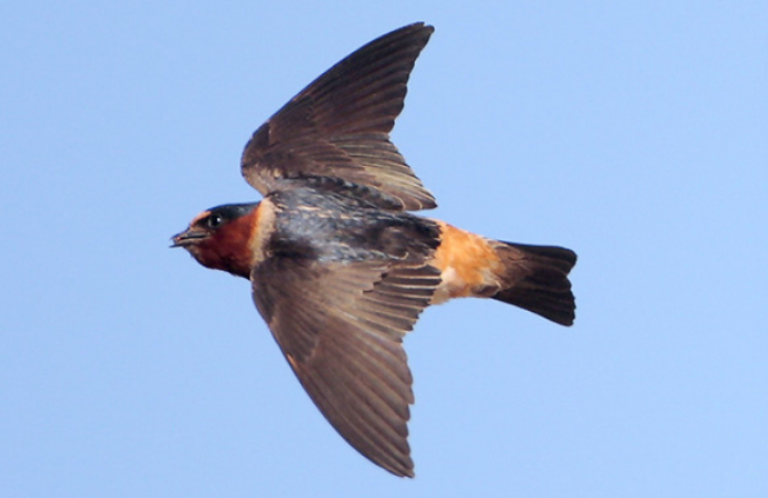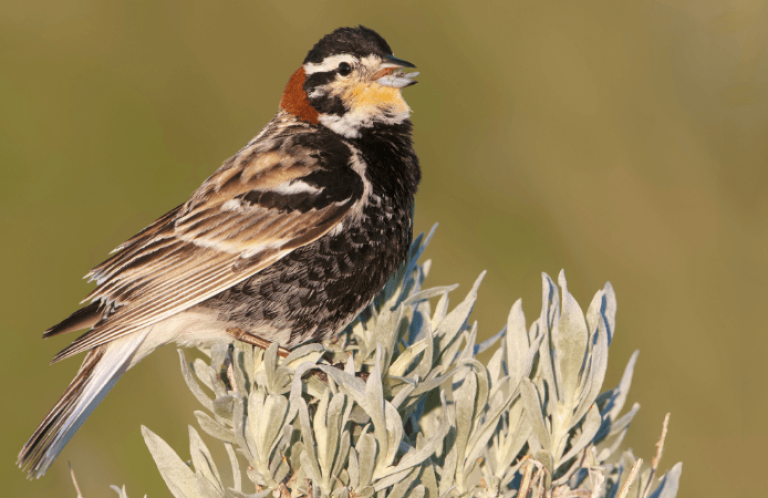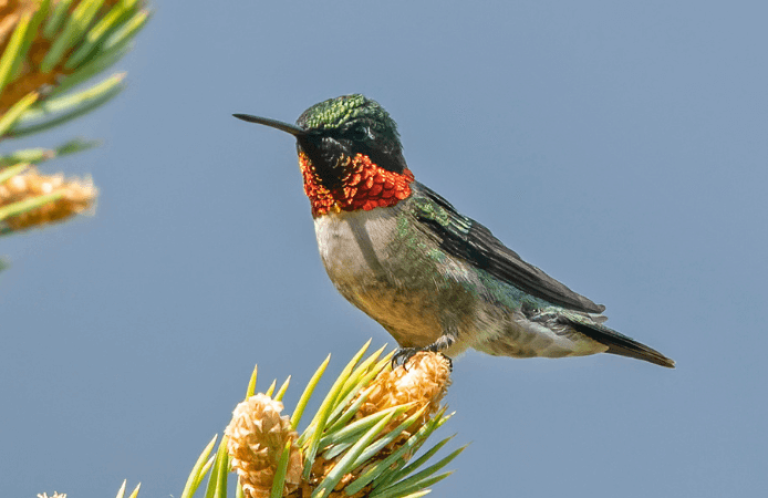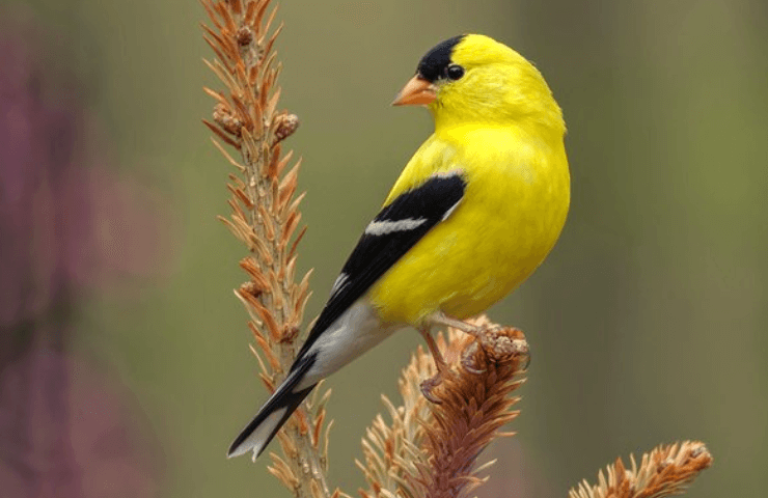Why Do Birds Sing? Recent Studies Sing a New Tune About Birdsong
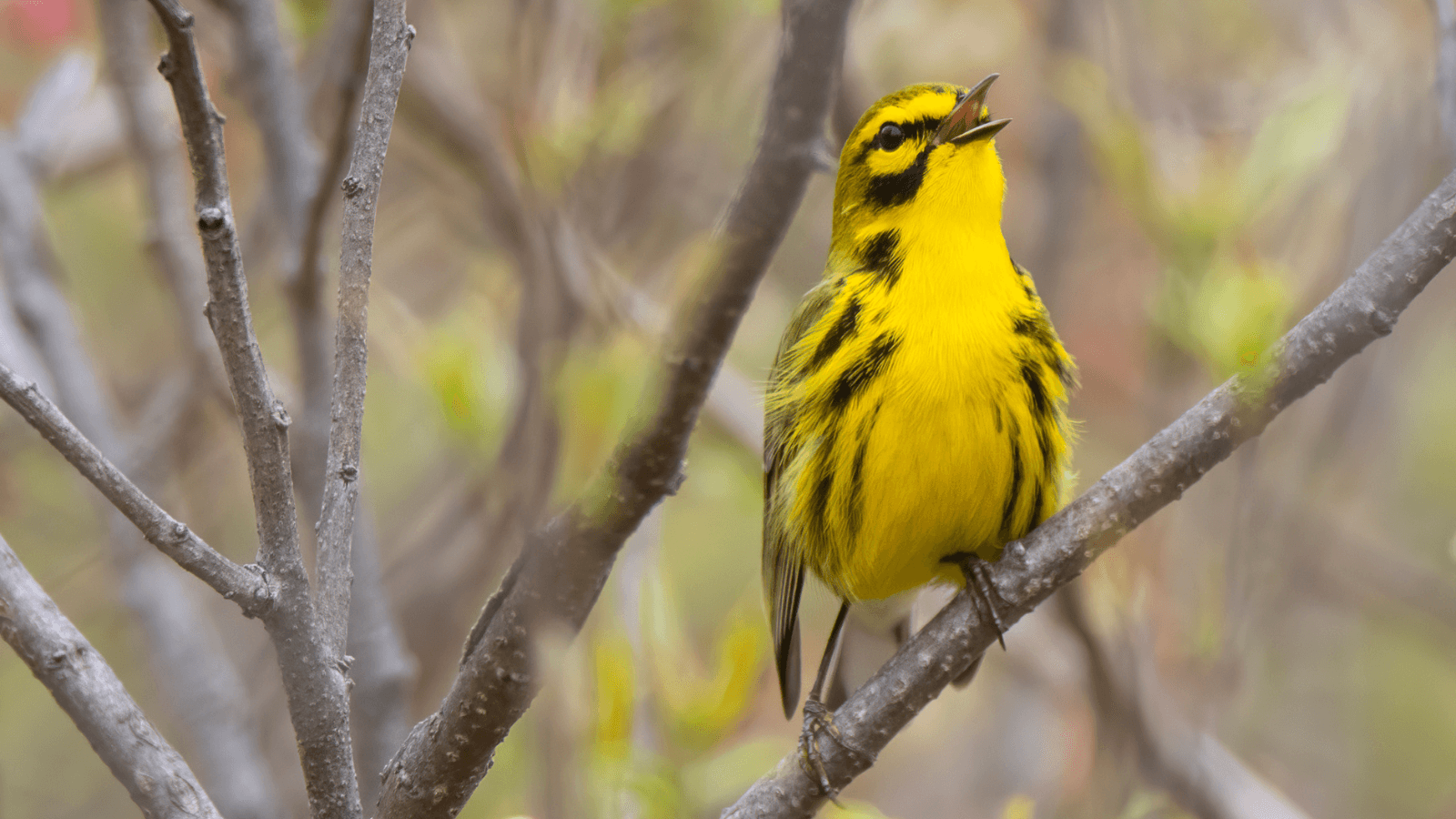
One of the surest and most welcome signs of spring is the sound of birdsong drifting from the trees and bushes. But to birds, these songs aren't just an expression of joy. They're serious business, a crucial part of how songbirds find mates, defend territories, and pass on their genes.
Birds have a specialized bit of vocal anatomy called the syrinx, a special organ located right where the windpipe branches to connect to the two lungs. (It's roughly equivalent to the human larynx, but our larynx is located further up, in the throat.) About 4,000 of the world's roughly 10,000 bird species are classified in the suborder Passeri — the “songbirds,” in which the syrinx is especially well-developed, allowing them to produce complex and beautiful sounds. These birds can even control each side of their syrinx independently, allowing them to produce two different notes at the same time.
Birdsongs serve two main purposes for their singers: to defend territories and woo mates. Songs often carry long distances and display the singer's health and vigor, warning away potential competitors and attracting potential partners. Although we often hear the most singing during the breeding season, birds that defend territories year-round may sing at any time of year.
Young birds typically learn their songs by listening to and imitating adults. Because songs are passed down from one generation to the next, species can even have regional dialects, with noticeable differences between individuals' songs depending on where they're from.
As you may have noticed, birds do most of their singing around dawn, a phenomenon that may start as early as 4 a.m. and is known as the dawn chorus. Ornithologists aren't really sure why birdsong peaks at this time, but it may be a way to make use of a time of day that is too dark for good foraging, or just a “warm up” session to help birds ensure they're singing as well as possible throughout the day.
And although we generally think of male birds as being the ones that sing, recent research is making ornithologists and birds reconsider that assumption — more on that below.
Types of Bird Sounds
Many birds produce a variety of calls in addition to songs. These are usually shorter, simpler vocalizations — although there are a few species whose barebones songs are actually simpler than their calls. Calls are used for quick communication with other birds, like to signal one's location or warn of danger.
Here, for example, is the song of the American Robin — a series of clear, sweet, rising and falling syllables, familiar across North America.
Here, in contrast, is one of the many calls of this species, sometimes described as a “whinny” or “chirr,” which can communicate different messages depending on the context.
Robins also have a shorter “chuck” or “tuk” call that's typically an alarm call given in response to predators.
Here's yet another American Robin call — a thin, high-pitched “see” that often warns of aerial predators such as hawks. (Look up the next time you hear this sound!)
Of course, this barely scratches the surface of the huge range of sounds that birds can make. Since we're talking about songbirds and birdsong, why not spend a few moments with South America's Musician Wren, whose haunting, melodic song may be one of the most beautiful in the bird world?
New Research on Birdsong
Ornithologists are constantly refining their understanding of birdsong — what it is, how it's used, and what it means.
Not all researchers agree on how exactly to define song and what makes song different from other bird vocalizations such as calls. No single characteristic of what we think of as birdsong — the time of year that birds do it, the way birds learn to do it, its complexity, or even its role in sexual selection — is consistent across all so-called songbirds. Some ornithologists are now arguing that rather than thinking of “songs” and “calls” as two totally separate categories, we should think of them as existing along one continuum, and that researchers need to give more thought to the specific questions they're trying to answer when they say they're studying “songs.”
Regardless of how exactly scientists define what is and isn't a song, it's becoming clear that birds themselves perceive birdsong much differently from the way we do. When a bird hears another bird sing, it's not focusing on the beautiful melody, but on tiny variations in amplitude and frequency that may be undetectable by human ears.
Recent experiments with captive zebra finches have shown that although they excel at picking up these fine-scale acoustic details in each other's songs, they struggle to recognize songs when they are altered in ways that wouldn't throw off humans, such as taking an entire song and shifting it to a higher or lower register. The tiny, rapid fluctuations in the soundwaves that birds produce may encode information on the singer's sex, age, health, etc., which can be picked up by other birds.
And that idea that it's male birds who need to sing to defend territories and attract females? Not so fast. In recent years, ornithologists have turned fresh attention to female song. Female song has been documented in 70 percent of songbird species, but it's especially prevalent in birds that live in the tropics, which helps explain why it's been overlooked. The birds of Europe and North America have historically been much more thoroughly studied than their tropical counterparts.
Females sing for similar reasons to males, including to defend territories and communicate with mates. In fact, females probably sang in a common ancestor of all modern songbird species, meaning the real question might be why female birds don't sing in some species today. Women have been the key drivers in this recent research on female song, showing how opening up science to underrepresented groups leads to challenging established assumptions and uncovering new ideas.
How You Can Help Songbirds
Policies enacted by the U.S. Congress and federal agencies, such as the Natural Resources Conservation Service and U.S. Fish and Wildlife Service, have a huge impact on America's songbirds. You can help shape these rules for the better by urging lawmakers to prioritize birds, bird habitats, and bird-friendly measures. To get started, visit ABC's Action Center.
American Bird Conservancy and our Migratory Bird Joint Venture partners have improved conservation management on more than 8.5 million acres of U.S. bird habitat — an area larger than the state of Maryland — over the last ten years. This is a monumental undertaking, requiring the support of many, and you can help by making a gift today.







































